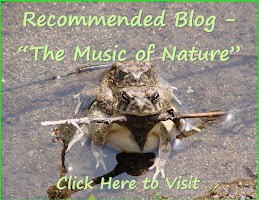
Biologists, wildlife researchers, ecologists and others use a variety of methods to count the number or variety of species within a selected area. These can include trapping, trackplate and camera monitoring for reptiles and small mammals and nighttime flashlight counts and stream surveys for frogs and toads. For birds there are transect surveys (recording birds observed or heard along a line), quadrant surveys (counting all birds within a designated space), nest searches to confirming breeding and production and the method perhaps most widely employed: point counts.
On Thursday of this week I was invited to conduct point counts at the Butte Creek Ecological Preserve, while Liam apprenticed under master bander (and friend) Dawn Garcia, mist netting and banding passerines (perching birds). As the banding crew prepared to put up their nets I walked to the first of 8 ‘points’ – designated spots used repeatedly to listen and watch for birds and record their presence.
The air was full of bird song even before I reached my point, and Dawn was first to catch the song of black-headed grosbeak, the first we had heard from this early arriving central American migrant this spring. Also heard were an early vocalizing blue-gray gnatcatcher and house wren.
Once at my point the protocol was specific: first I recorded the date, location and weather. Next I recorded which of the eight points I was observing and the specific start time. I then had a five minute window during which to record all birds seen and heard. These detections were broken down further into those which were detected during the first three minutes then the last two minutes, also whether they were noted inside or beyond fifty meters, and whether the birds were stationery or in flight. The birds were recorded by their 4 letter American Ornithologist Union banding code and hash marks were used to record each different detection.
While this sounds like fun (because it is) it can also be challenging to recognize, record, and keep track of which individuals are being heard where and whether or not they are birds already heard or new birds. Because there is so much going on during the count, listening, watching and writing, an experienced counter learns to depend on their ears for the majority of the detections. During the peak of the courting period the over-lapping songs of many different species can be quite a web of sound to try to untangle, and after 5 minutes a mental break is needed to ‘wipe the slate clean’ and prepare for the next point.
Conducting point counts well requires a lot of self training and testing. Liam and I spend hours testing each other with recorded bird songs and calls so that we can readily identify species likely to be encountered in our area. Even then common species can sometimes emit a sound not normal for them and it requires patience to track down the maker to confirm the species ID (after the five minutes is up). Only by doing this does one develop a larger repertoire of songs and calls. By being intimately familiar with the vocalizations of expected species, a newcomer or unexpected stray stands out and can likewise be tracked down to determine it’s identification.
You’re probably wondering which species were heard or seen on my survey? A partial list includes:
Bullock’s Oriole, House Finch, Black Phoebe, Yellow-rumped Warbler, Nuttall’s Woodpecker, White-crowned Sparrow, American Robin, American Crow, European Starling, California Towhee, Spotted Towhee, Acorn Woodpecker, Orange-crowned Warbler, California Quail, Turkey Vulture, Lesser Goldfinch, Wrentit, Wild Turkey, Band-tailed Pigeon, Western Scrub Jay, Purple Finch, Bushtit, Hutton’s Vireo, Oak Titmouse, Bewick’s Wren, Blue-gray Gnatcatcher, Anna’s Hummingbird, Northern Flicker, Brewer’s Blackbird, Dark-eyed Junco, Mourning Dove, Black-headed Grosbeak, Tree Swallow, Kildeer, Red-winged Blackbird, Brown-headed Cowbird, Red-shouldered Hawk, American Goldfinch, House Wren, Mallard, Wood Duck, White-breasted Nuthatch, Hermit Thrush, Downy Woodpecker.



No comments:
Post a Comment